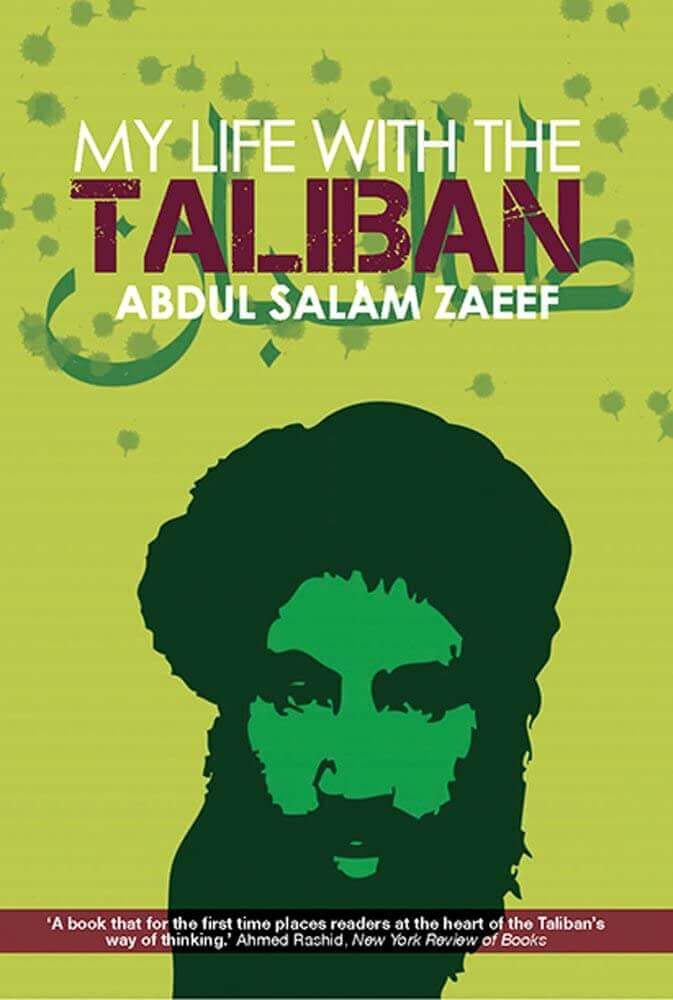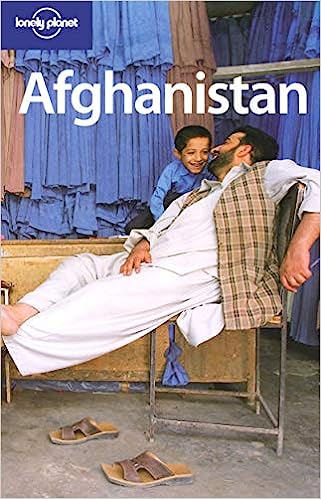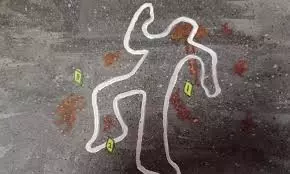79 Comments
Last updated on June 17, 2024

The first time I traveled in Afghanistan was in June 2021, just when the US Army had begun to withdraw from the country, and shortly before the Taliban took it over.
With the new change of government, I decided to go back to see what it was like to travel in Afghanistan under new Taliban rule.
From a traveling perspective, a lot has changed in this country.
After visiting Afghanistan 5 times, traveling all across the country, during the 4 seasons, from Kandahar to the Wakhan Corridor, here’s the most updated and complete travel guide to Afghanistan, containing everything you need to know relating to safety, visas, permits, budget, top experiences, cultural facts, and more.
Check: 50 Photos that will show you the beauty of Afghanistan
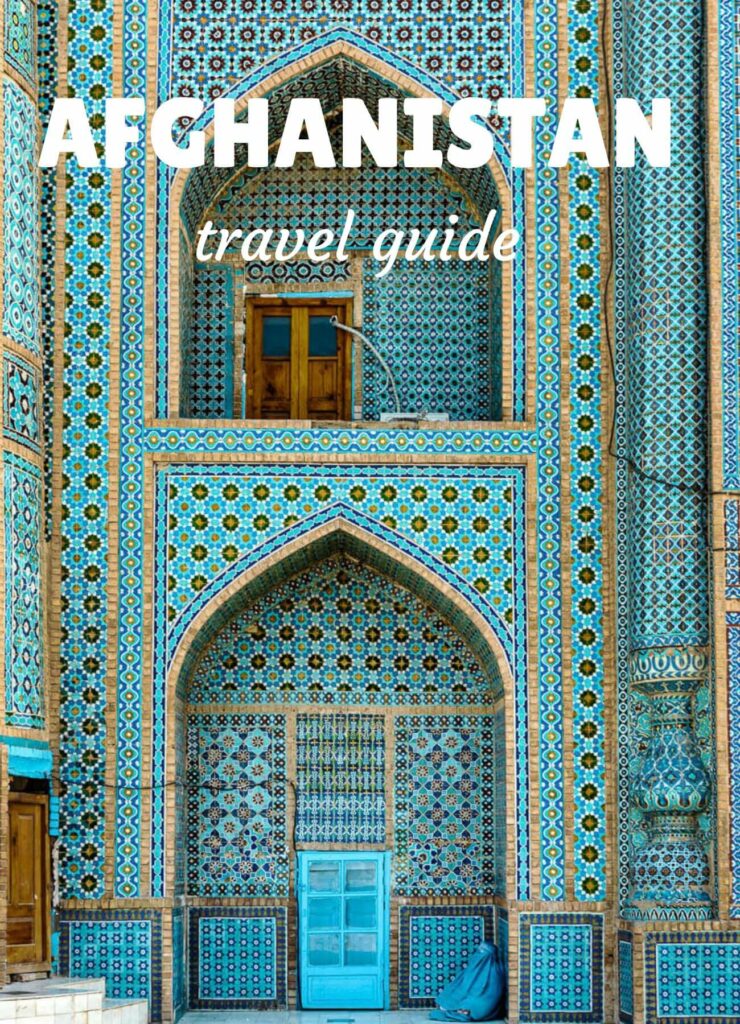

In this Afghanistan travel blog you will find:
our recommended travel insurance for Afghanistan
IATI Insurance is one of the very few that covers travel in Afghanistan.
Can you travel to Afghanistan now?
Yes, today, anyone can go to Afghanistan.
In fact, Afghanistan has always been open for tourism, and visas have always been issued at the respective embassies.
When the Taliban came into power, only 2 or 3 embassies could issue you a tourist visa but today, the number of embassies increased significantly – more on that on the visa section.
Moreover, either because they want to whitewash their image, or because they need foreign currency, the new Taliban Government is welcoming foreign tourists, the only barrier being the ethical issues that such a trip may trigger on certain travelers.
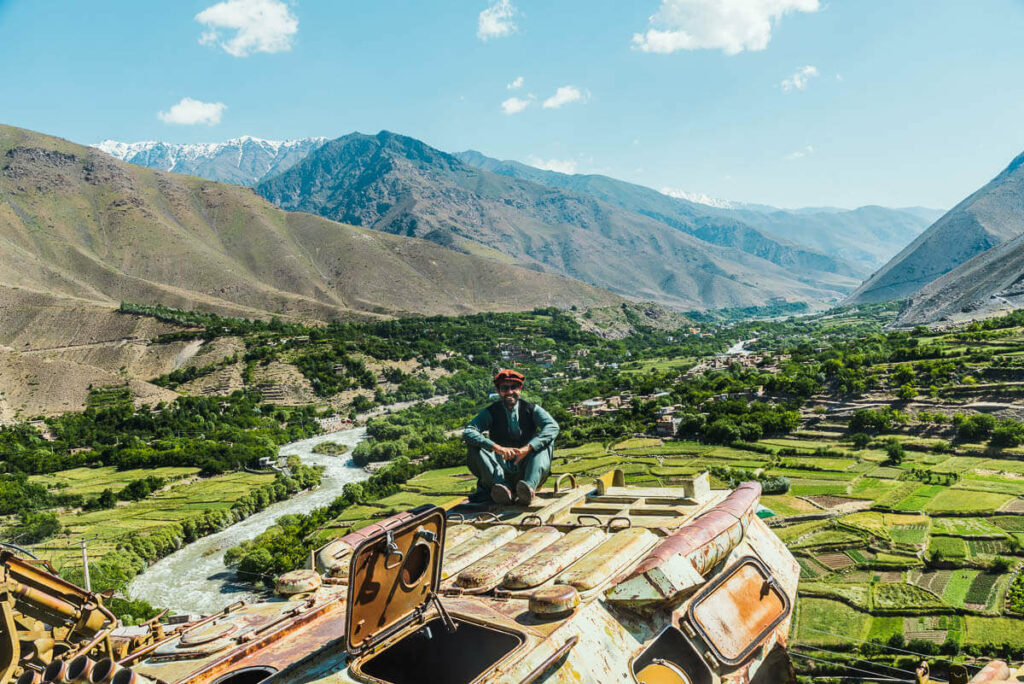

Introduction: What’s going on in Afghanistan?
More than 40 years of conflict have turned Afghanistan into an actual war-torn country, starting in 1979, when tribal people rebelled against the Communist party, starting a war between the Soviet Union and the Mujahideen, which lasted until 1989.
The Soviets were defeated but then, Mujahideen warlords began to fight each other over power, impoverishing the country even more.
Fed up with all that warlordism and disappointed that Islamic law had not been enforced after the communists were kicked out, a former Mujahid founded a movement named Taliban in the city of Kandahar.
That man was Mullah Omar, the historical leader of the Taliban.
The Taliban quickly took over the whole Kandahar province and, by 1996, they controlled 90% of Afghanistan’s territory, including Kabul, ruling until 2001.
Then, the American Invasion came, initiating a war that ended with their withdrawal in 2021, an event that Taliban used to take over the country.
Afghanistan under Taliban rule is the situation you will witness if you travel today in Afghanistan.
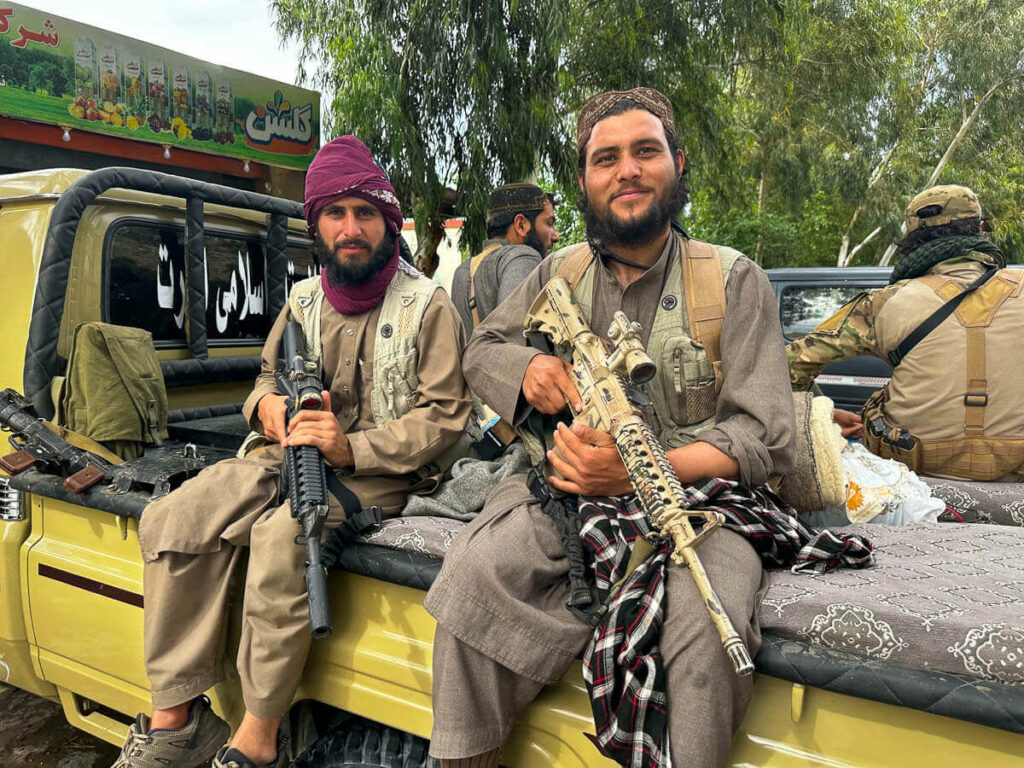

🪪 How to get a visa for Taliban Afghanistan
Before the Taliban took over in 2021, you could get an Afghanistan visa at pretty much any embassy around the world but things have changed now, since there’s only a handful of embassies and consulates that can issue you with a valid visa:
The easiest embassies where to get an Afghan visa are:
Furthermore, travel reports suggest that the following embassies are also issuing tourist visas for Afghanistan but I don’t have any personal experience with it – reports are welcome in the comments section:
And last, some embassies in Europe have also started issuing them in:
The easiest is to get your visa in your home country but if there is no active embassy in the country you reside, Dubai and Islamabad are the most convenient places, for the simple reason that you find there are daily flight connections with Kabul.
Visa on arrival (VOA) for Afghanistan
There is a way to get a VOA for Afghanistan and that is by crossing from Tajikistan at the Shir Khan border – this is the border that is closer to the Afghan city of Kunduz.
The visa on arrival has a cost of 150 USD and the whole paperwork takes a few hours.
From Kunduz, you can easily get to Mazar. This border however, is the most convenient one for those traveling to the Wakhan Corridor. In fact, this is the route we’ll take on our upcoming Wakhan Corridor Expedition.
Travel requirements for the Afghanistan visa
I’ve personally got my Afghan visa in Islamabad, Dubai and Madrid and generally speaking, these are always their requirements:
- 1-2 passport photos
- 1 passport copy
- 1 Pakistan visa copy (if you apply in Islamabad)
- 80-130 US dollars, depending on the urgency. Americans can pay up to 210 USD
- Letter of Invitation (LOI) + Company license of your sponsor – Optional
Read: How to travel to Pakistan


My personal experience applying for the Afghanistan visa
Islamabad: Showed up without an appointment. A visa costs 80 USD, but you can also pay an additional 50 USD to get your visa in less than 24 hours. In my case, I went to the embassy at 3:30pm and got it the next day around 2pm. If I had applied early in the morning, I could have got it on the same day in the afternoon. No LOI was needed.
Madrid: Showed up without an appointment. Paid €200 and got my visa in 1 hour. The non-urgent service takes 1 week and costs €120. You may mail them your docs as well. No LOI was needed.
Dubai: Showed up without an appointment. Paid 130 USD and got my visa in 3 hours. Travel reports suggest that sometimes, they do ask for the LOI.
The other embassies and consulates have similar rules, but visa fees may vary. Your reports on this matter are welcome in the comments section.
How long is the visa valid for?
The visa is single entry and it’s valid for 30 days within a 90-day period.
Which nationalities can go to Afghanistan?
All nationalities are eligible to apply for an Afghan visa at any of the previously shared embassies.
Can Americans travel to Afghanistan?
Yes, US citizens can also travel to Afghanistan without any sort of restriction.
Do you need a Letter of Invitation for your Afghan visa application?
Upon applying for your Afghan visa, they might ask who will be your sponsor in Afghanistan, but you can say that you don’t need one, that you are traveling alone, and it should be fine.
This rule applies in Islamabad and sometimes in Dubai as well, but in Dubai, some travel reports suggest that this hasn’t always been the case.
At the end of the day, in Afghanistan, rules aren’t written and more often than not, they depend on the respective authority’s mood.


🚑 Travel Insurance for Afghanistan
Most travel insurance companies don’t cover for travel in Afghanistan.
The one which does, however, is IATI Insurance.
- They have loads of different plans for all types of travelers
- Covers senior citizens too
- Readers of this blog can get an exclusive 5% discount.
⚠️ Is it safe to travel in Afghanistan with the Taliban?
From a security perspective, Afghanistan has improved a lot but it’s a relative safety. Kindly allow me to go point by point.
Visiting Afghanistan before the Taliban took over in 2021
Up to summer 2021, any trip to Afghanistan was potentially dangerous.
The country was ruled by a “democratic’” Government, but they were in an ongoing war with the Taliban, who controlled a significant part of Afghanistan.
Traveling in the Government-controlled areas was relatively OK but suicide bombings occurred every other day and violent crime in cities like Kabul were kind of a big deal.
On the other hand, Taliban-controlled areas were physically possible to visit but the chance of getting kidnapped was extremely high.
In summary, visiting Afghanistan was possible but you had to travel with an extra degree of caution and accept a certain amount of risk.
Read: Is Pakistan safe?
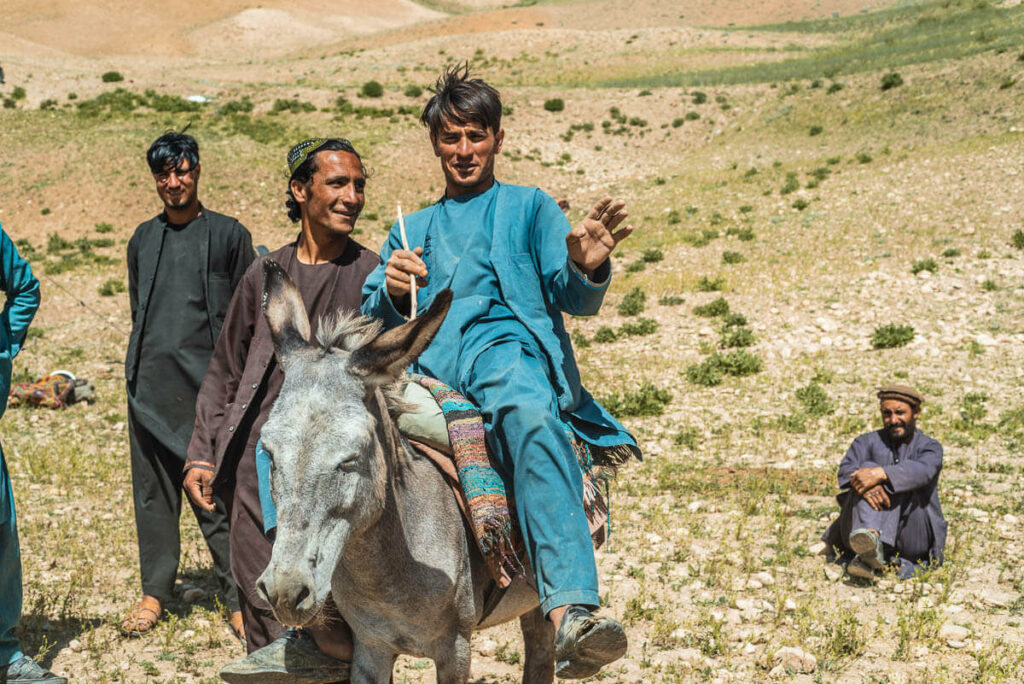

Traveling in Afghanistan after the Taliban took over in 2021
Despite the humanitarian and economic crisis, the war is finally over in Afghanistan and the new rulers are trying to build a peaceful and legitimate Government – or pretending to at least – aiming at being recognized by the entire international community.
Taliban are not carrying out terrorist attacks any longer, kidnappings are a thing from the past, and violent crime seems to have disappeared from Kabul.
Is this thanks to the Taliban?
Well, that’s what they want you to believe but not really, it’s just that they are the ones in charge now, they aren’t fighting anymore and just wish to be a normal country, while attracting foreign investment.
With the Taliban, the country is much safer than in 2021, one can really feel it because all the provinces are fully open and also because the Afghans you will meet along the way will keep repeating all the time, that Afghanistan is finally safer.
However, there is a potential danger: Islamic State Khorasan.
Warning: Islamic State Khorasan
You might find it hard to believe that the Islamic State is still alive and that they have become the number 1 enemy of the Taliban, claiming that Taliban are too soft and mere puppets of the West.
This branch of IS in Central Asia is called IS Khorasan and the Taliban are currently in a violent counterinsurgency struggle against them.
IS Khorasan has carried out several terrorist attacks under Taliban rule.
In fact, on May 17th, 2024, the Islamic State attacked a group of tourists in the town of Bamyan, where 3 Spanish citizens died.
Unfortunately, the attack was against our group, we aren’t trying to hide it.
Our conclusions on the attack in Bamyan
- While it’s true that safety in Afghanistan has improved a lot, remember that one must always assume a certain amount of risk.
- The attack was against our group but all those affected or involved keep believing that it was a random attack, since Afghanistan has been receiving thousands of tourists for the last years, plus the attack happened in an area where you always see travelers.
- While it’s true that we won’t be traveling to Afghanistan any time soon, travelers keep going there, since many also know that it was an isolated case. As a traveler, what would I do? Personally, I would wait for a few months to see how the situation evolves but what I truly believe is that these sorts of attacks shouldn’t be a barrier to your willingness and excitement for traveling in Afghanistan.
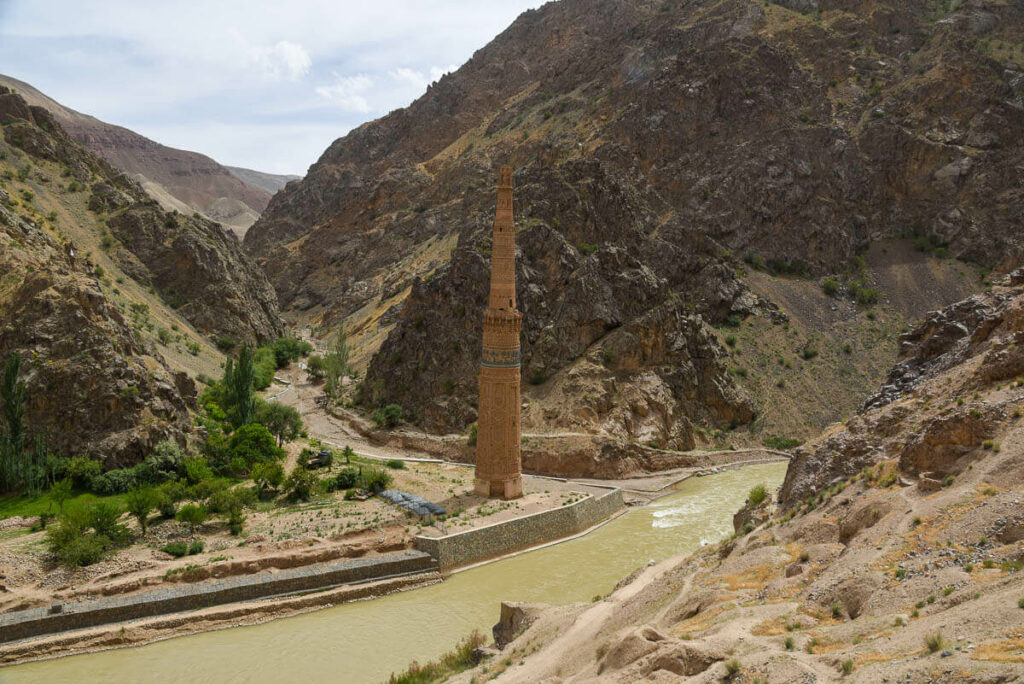

Permits for traveling in Afghanistan
For traveling around Afghanistan, you will need special permission from the Taliban.
If you are traveling on an organized tour, you don’t need to worry about anything because your local fixer will take care of that but independent travelers will have to get it for themselves which, in our experience, isn’t an easy thing to do.
Need to know about your permit for traveling around Afghanistan
Your travel permit must mention all the provinces you will visit in Afghanistan.
However, it should only mention those provinces you are planning to stay in, not those you are just passing through.
For example, if you want to visit Bamyan from Kabul, you will inevitably pass through Wardak province, but you don’t necessarily need a permit for that, because you’ll just be driving through.
You will have to pay 1000 AFN for each province you visit, which is around 12 USD.
This permit is absolutely needed, and many Taliban will ask for it at checkpoints.
Note: They will usually make you pay 1000 AFN per province you visit but sometimes, depending on the traveler, they don’t charge it. From what I heard, they usually don’t charge anything to female travelers.
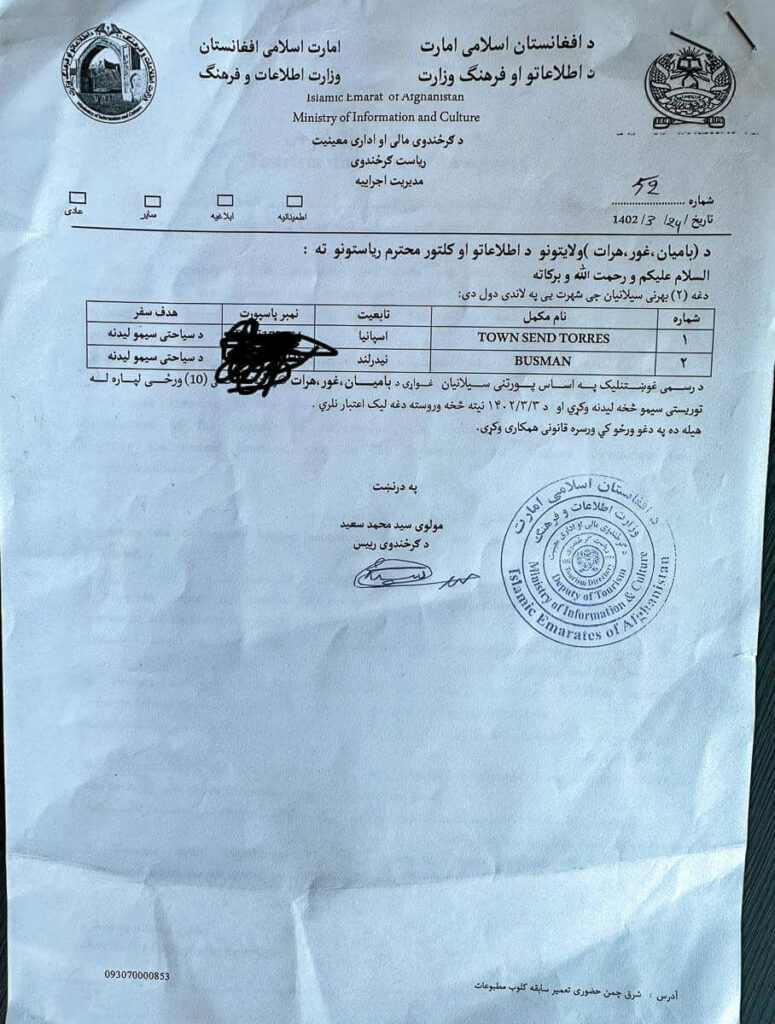

How to get your travel permit for Afghanistan, a step-by-step guide
Warning: The following steps look pretty straightforward but, in our experience, rules keep changing and everyone seemed to give us different information. Getting inside the different offices and ministries was also pretty challenging, since the Taliban guarding the gates don’t speak a single word of English, and they never seemed to understand the purpose of our visit.


Step 1 – Go to the Ministry of Culture & Information
Location is here.
Here, you’ll need to get 2 signatures from 2 different authorities, which will take around 2 hours.
Once you get your 2 signatures, they will give you an address and a phone number.
In our case, each of the 2 authorities gave us completely different addresses, phone numbers and contact persons but only one of them picked up the phone.
Step 2 – Go to the Tourism Directory, aka Afghan Tour
Location is here.
This building was difficult to find, since there wasn’t any sign but only concrete walls around it.
Once you get in the building, you’ll be interviewed by a person, who will probably ask why you aren’t traveling with a guide or a translator.
For this conversation, it’s important to wear local clothes, be extremely polite and pretend that you know your way around the country.
We said we had good friends in Bamyan and Herat, that they would be our translators, which seemed to satisfy him.
He’ll also ask for the provinces you plan to visit and after the interview, you’ll speak to the highest authority from this department, the person responsible for signing your travel permit and giving the final OK.
Good luck.
Afghanistan travel tip: Remember that on Friday, the offices are closed.
How to register at the regional office
Once you get your general travel permit, you will also have to register at the regional Information & Culture Department of every province you visit.
For example, if you visit Kandahar, the first thing you should do before sightseeing is just showing up at the respective office to get the local permit, which you will get only if you show them the general travel permit you got in Kabul.
This local permit will allow you to visit freely all the sites within the province.
Where are these offices located?
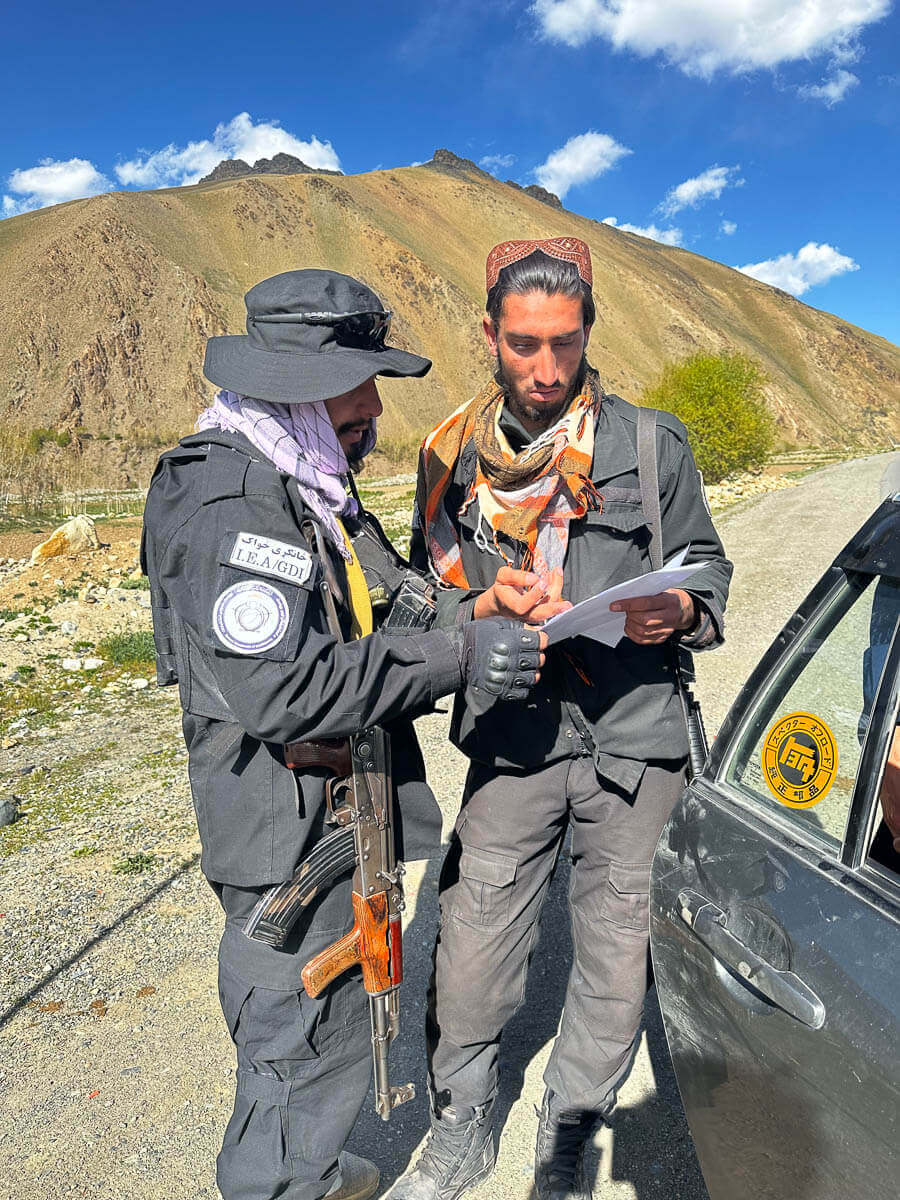

How to deal with the Taliban when you’re in Afghanistan
Taliban are everywhere and, as an independent traveler, you will have to interact with them at checkpoints or when trying to get your permits.
Here’s what you need to know about it.
Taliban are generally kind with foreigners
Believe it or not, most Taliban I spoke with were particularly nice and helpful.
They are mostly Pashtun, a group of people living across Pakistan and Afghanistan, known for being the most hospitable people on Earth, ruled by a code of conduct that dictates that guests should be protected with their own life if needed.
I personally believe that, on most occasions, their kindness is genuine but you also need to remember that Taliban wish to be recognized as a legit Government and that their extreme kindness could be part of that strategy.
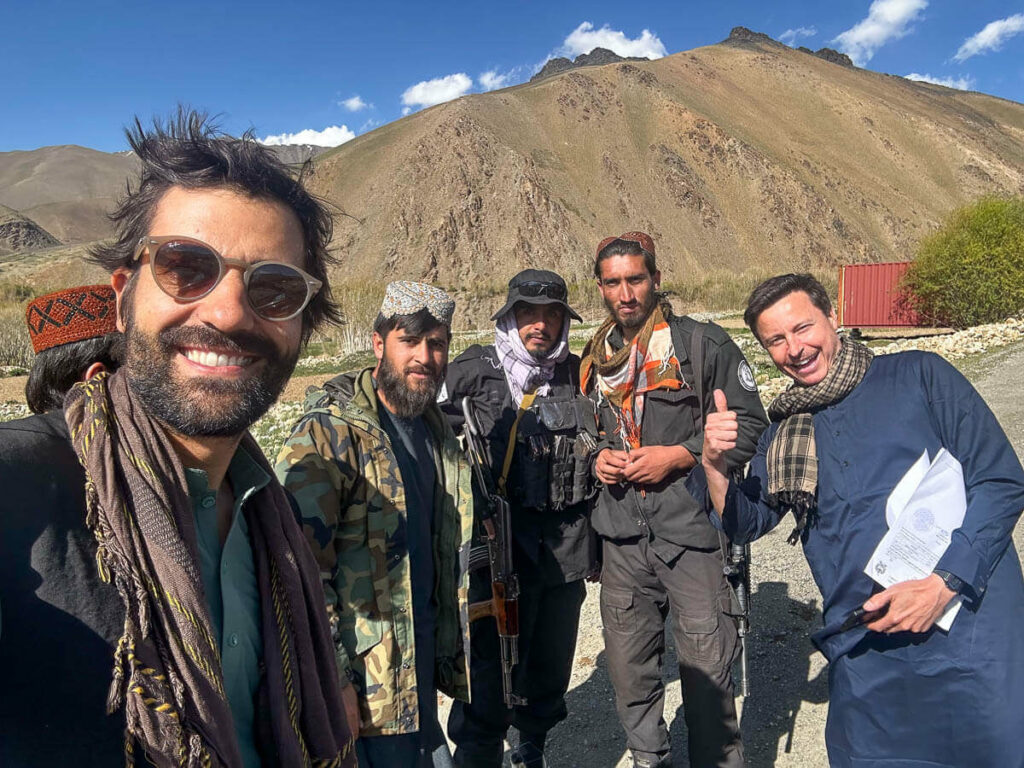

Taking photos with Talib boys
Taliban are usually very keen to be photographed or to be in selfies, and they seem to enjoy it a lot, so don’t be shy and just ask.
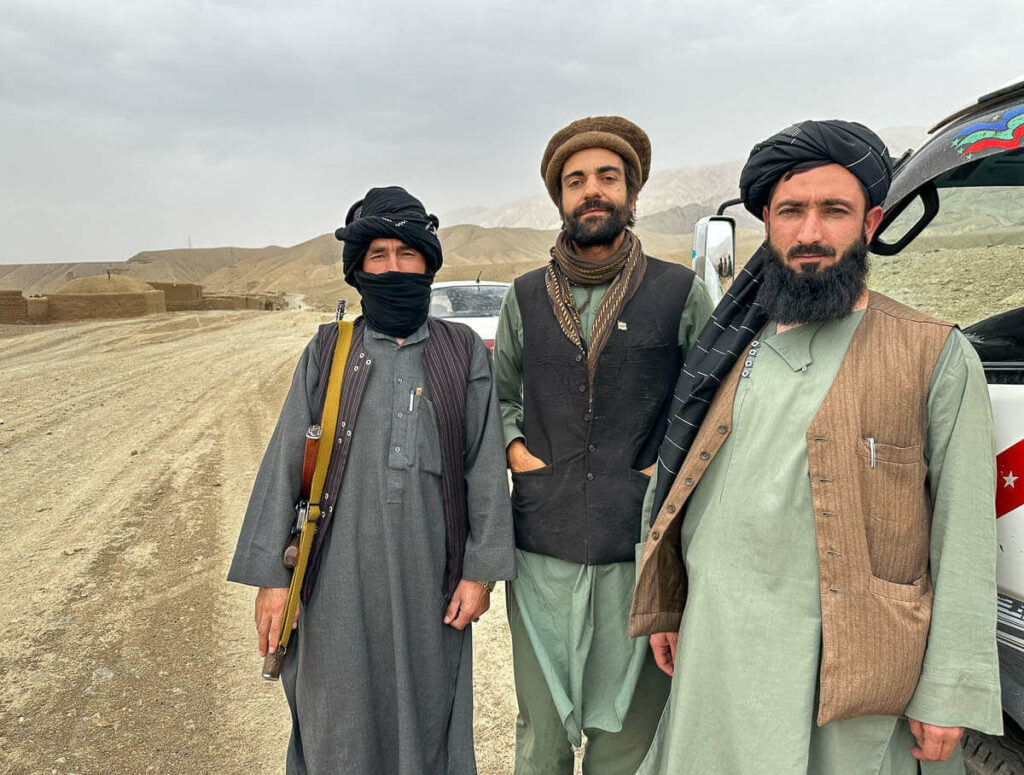

Remember that you don’t need to like them, but at least pretend that you do
Look, I have no particular sympathy for the Taliban.
At the end of the day, we all know that their aim is imposing and forcing all Afghans to follow their fundamentalist Orthodox ideas of Islam.
However, if you want to travel around the country independently, you will need to play along with their game and if you are not willing to do that, perhaps you should travel in Afghanistan with a local guide, so your interactions with them will be minimum.
I am at a stage where I don’t really care to be judged by other travelers – or people reading this blog – so know that in Kabul, I did buy a Taliban flag, which I showed and waved at checkpoints when I found it convenient, just to make our journey a smooth one.
What’s the general opinion on Taliban?
It’s important to remember that Afghanistan is the most conservative country in the world (along with Yemen and way more than Saudi Arabia) and whether we like it or not, many Afghans – and that includes many women too – haven’t seen their lives changed with the new Taliban rule and that reason is that they were already following those rules.
This is the reason why Taliban are supported by a massive part of the total population.
Moreover, there’s another significant segment of Afghans who, while they don’t necessarily agree with the Taliban agenda, accept them because they have brought stability and safety across the country.
Nonetheless, remember that not everyone supports them, especially Hazara people – a Shia minority – and that there are many Afghans who, while still conservative, are not happy with their extremist ideas, like banning women from higher education, for example.
💃 How to travel to Afghanistan as a women
What is the situation like for female travelers in Afghanistan?
If you are traveling with a man, it should be fine but solo female travelers will certainly have a different experience.
My friend and fellow traveler Emma Witters has traveled solo extensively across Afghanistan, including in provinces such as Helmand.
You can reach her at @emmawitters_
🛫 How to get to Afghanistan
How to travel to Afghanistan by air
Every day, more and more airlines have resumed their operations in Kabul.
Kam Air is the national airline that can take you to Kabul. They have daily flights from Dubai and Islamabad, and also occasional flights from Tashkent, Istanbul, Abu Dhabi and Doha.
Today, you can also fly with Emirates, Fly Dubai and Turkish Airlines.
Just check flight schedules on their website.
How to travel to Afghanistan by land
Afghanistan shares a border with:
Pakistan: The Khyber Pass at Torkham is finally open but this is the most chaotic border I have ever crossed.
Iran: It’s fully operational. From the Iranian city of Mashhad, you can get into Herat. Many travelers have used this border in the past.
Turkmenistan: The border is open as long as you have valid visas but this is truly unexplored territory. I contacted a Turkmen fixer who told me that Turkmen visas are often denied if your idea is to enter or exit Afghanistan from Turkmenistan, but there’s a chance to get in.
Uzbekistan: You can get into Afghanistan from the city of Termez. Mazar-i-Sharif is the closest big city. Here you have the border crossing report.
China: Very deep into the Wakhan Corridor, at 4,923m above sea level, the Wakhir pass connects Afghanistan with China. The border is closed for foreigners and in any case, it’s just too remote to go.
Tajikistan: There are a few border crossings. Ishkashim used to be the most popular one but that one is closed now. Shir Khan, near Kunduz, is the one that is now open to foreign adventures.
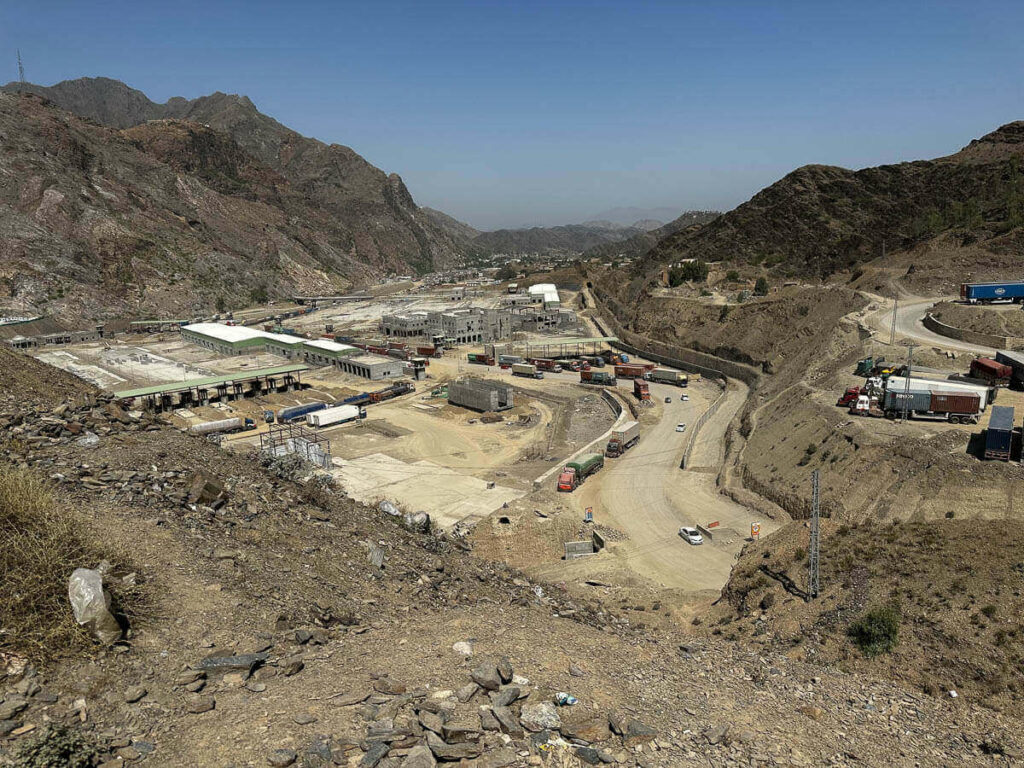

👨 Independent travel in Afghanistan
Is independent travel allowed in Afghanistan?
Yes, it is, as long as you have a valid travel permit. Check the permit section of this post.
Is backpacking in Afghanistan difficult?
Well, it depends on your previous backpacking experience and where you want to go within Afghanistan but, to be honest, I didn’t find it more difficult than backpacking in Pakistan.
If you are planning to visit Mazar, Herat, Kabul or Bamyan, it shouldn’t be very difficult. There is plenty of local transportation or you can easily take a domestic flight.
My recommendation would be however, to save the name and location of your hotel because for security purposes, some hotels in Afghanistan have no signs, so they can be difficult to find.
Visiting rural areas, Kandahar province or traveling beyond Bamyan in Ghor province is a different story. Nobody speaks English, hotels are scarce (if any) and there’s little public transportation.
We did travel from Kabul to Herat through the Hindu Kush by public transportation. It was difficult but worth the adventure. Check the travel report.
⛅ Best time to visit Afghanistan
With different geographical areas, Afghanistan can be a year-round destination.
Traveling in Afghanistan season by season:
Traveling to Afghanistan in winter
In winter, many parts of Afghanistan are covered in snow, with temperatures reaching -20ºC in places like Bamyan or the Wakhan.
In my opinion, this is the prettiest season to visit Afghanistan.
Nevertheless, remember that winter doesn’t come with its own issues, and that roads and certain things may be blocked.
We did run one expedition during the heart of winter in Afghanistan, and it was great. Check our upcoming Afghan expeditions here.
Traveling to Afghanistan in spring & autumn
From a tourism perspective, spring and autumn are the best seasons for visiting Afghanistan, when the weather is pleasant across the whole country.
Nevertheless, it can be too early/late for trekking in the Wakhan Corridor.
In late spring or early autumn, it might already be too hot for Mazar or Kandahar. In fact, I visited them in May and the temperature was already at nearly 40ºC.
Traveling to Afghanistan in summer
In summer, cities like Herat, Mazar and Kandahar are hell ovens, with temperatures averaging over 40ºC.
Kabul is hot too but, because of the high altitude, it can be bearable for some.
Summer, nonetheless, is the best season for trekking along the Wakhan Corridor.
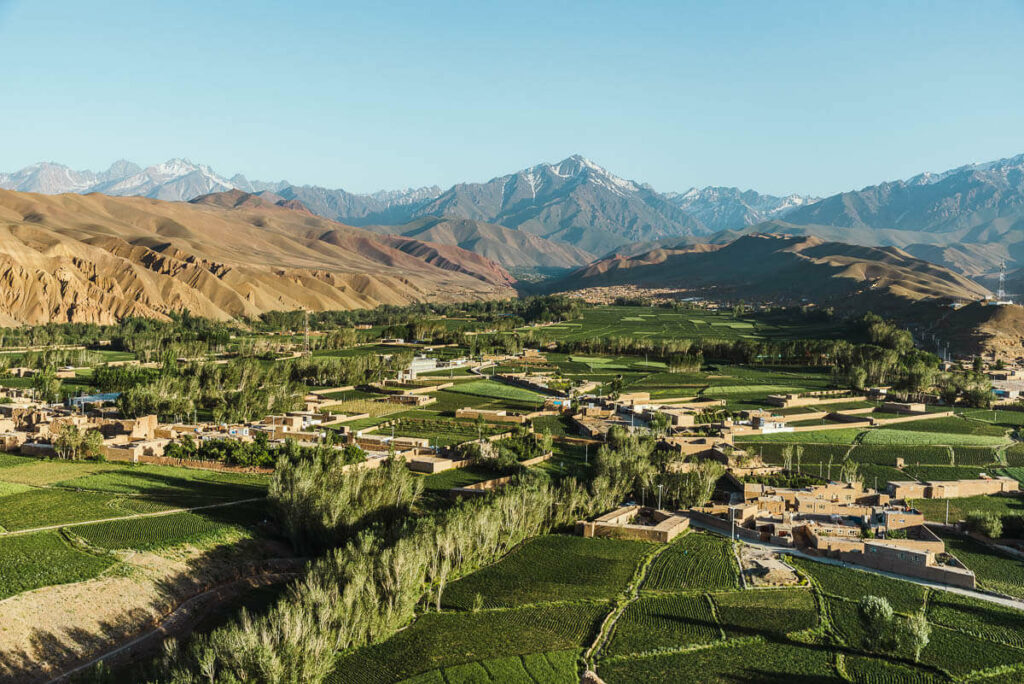

🛖 Top 5 experiences in Afghanistan
Some of the best things to do in Afghanistan are:
1. Strolling the streets of Old Kabul
The old city of Kabul is one of those places where there is always something to look at.
It’s chaotic, lively, bustling and its different bazaars are composed of labyrinthic lanes which are perfect for random rambling.
The bird market is perhaps the most acclaimed spot among travelers.


2. Trekking in Bamyan
Few places in Afghanistan feel as peaceful as Bamyan, a mountainous, remote region in central Afghanistan, home to a large ancient Buddhist heritage and some of the most epic, unspoiled mountains in the country.
If you like nature, it doesn’t get better than Bamyan.


3. Learning about the Taliban legacy in Kandahar
Kandahar is the former Taliban capital, where the Taliban movement started and also Mullah Omar’s home city.
It’s also the heartland of the Pashtun, a world apart from the rest of Afghanistan.
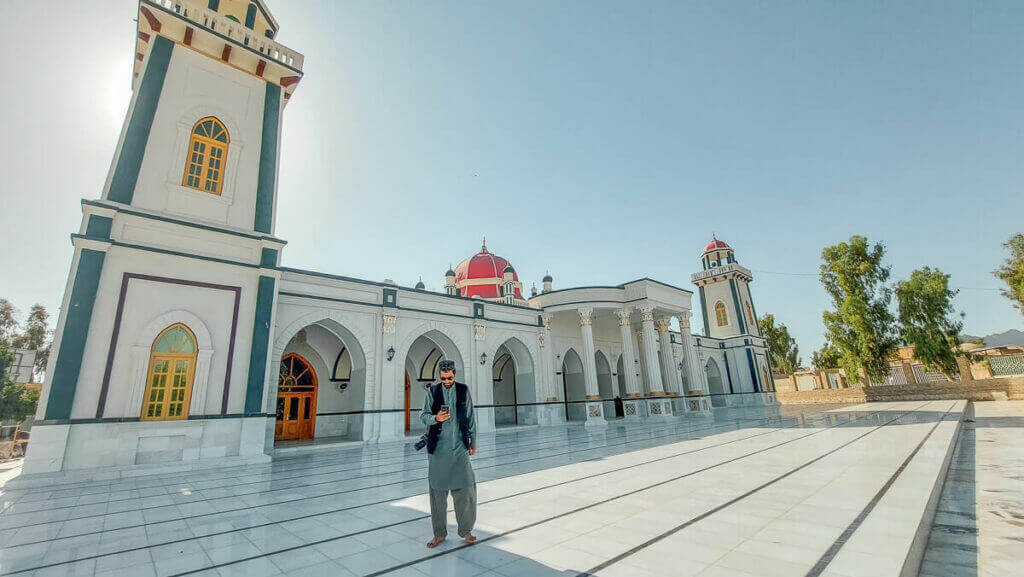

4. Visiting the Blue Mosque of Mazar-i-Sharif
This is one of the most imposingly beautiful mosques I have ever seen, dating from the 15th century, a reason by itself to travel all the way to Mazar.
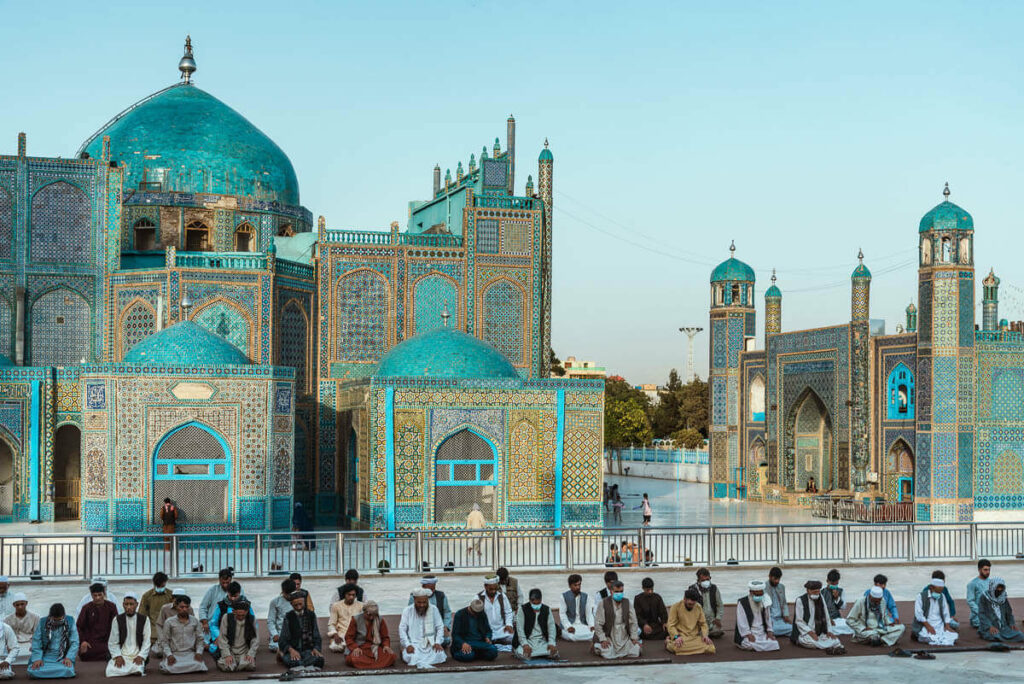

5. Getting off the beaten track in rural Afghanistan
Afghanistan’s countryside offers some of the most unspoiled and authentic areas in the world, regions that have received very little exposure from the outside world, and are home to mesmerizing, lush valleys dotted with adobe-made villages and curious locals.


💰 Budget, money, and costs in Afghanistan
In Afghanistan, their currency is called the Afghani (AFN) and approximately:
$1 = 72 AFN
Afghani or Afghan?
Some people commit the funny mistake (including myself in the past) of referring to the people of Afghanistan as Afghani. It’s wrong. Afghani is their currency and the people are Afghans.
Exchanging money in Afghanistan
I always change money at one of the many stalls in Shahr-e Naw, in Kabul.
They accept both Euros and USD. They even accept Pakistani rupees, in case you have any left from your trip to Pakistan.
ATMs in Afghanistan
Surprisingly, ATMs in Afghanistan do accept international credit and debit cards.
Just look for Afghan International Bank. There are quite a few of them in Kabul, especially in Shahr-e Naw area.
Paying by card in Afghanistan
You might be able to withdraw money from an ATM but you can’t pay by card anywhere in Afghanistan, so do have cash for your trip.
How much does it cost to travel to Afghanistan?
Everyday life in Afghanistan is cheap but domestic flights and accommodation add up.
Here’s an overview of the most typical costs.
How much do food and drinks cost in Afghanistan?
- Breakfast in a local restaurant (usually consisting of eggs, bread and tea) – 100 AFS
- Local meal in a restaurant (usually palaw rice, kebab, etc) – 200-300 AFS
- Meal in a mid-range restaurant – 400-600 AFS
How much does transportation cost in Afghanistan?
- One-way domestic flight – 60-120 USD
- Taxi within cities – 50 AFN for short taxi rides. Up to 200-250 AFN for longer ones.
- Half-day taxi in Kabul – Once, I hired a driver in Kabul for the morning to take me to a bunch of different places I had in mind. He charged me 20 USD for that.
- Taxi from the airport to city center – 500 AFN in Kabul, 300-400 AFN in Herat or Mazar.
- One-way taxi to Bamyan – 75 USD
- Round-trip taxi ride to Panjshir – 50 USD
- Local bus within the city – 5 AFN
How much does accommodation cost in Afghanistan?
Here’s the thing.
Good, decent accommodation can get pricey.
Expect to pay anything between 30 USD and 50 USD for a room, a relatively basic one but clean and with security.
You can definitely find cheaper hotels but there won’t be any kind of security.


🛺 Getting around in Afghanistan: transportation
How to travel around Afghanistan by public transportation
Afghanistan has a good network of buses, minibuses and local shared taxis connecting towns and cities.
Experienced budget backpackers won’t find it difficult to move around the country.
Read: Overlanding from Kabul to Herat via Minaret of Jam by local transportation


How to travel around Afghanistan by plane
Taking a domestic flight is also a good option for traveling around Afghanistan.
You can book your tickets online on Kam Air.
There’s another local airline named Ariana. That’s the one I use for flying from Kandahar to Kabul.
Note that airlines in Afghanistan aren’t very reliable. They get delayed all the time, especially Ariana.
Note that all domestic flights go through Kabul, and that there’s no direct flight from Herat to Mazar, for example, or from Herat to Kandahar, but you need to go through Kabul.
Typically, all flights cost $60-$120 and, if you are already in Afghanistan, I strongly recommend booking it through a physical Kam Air office.
It happened to me once that after booking a flight with Kam Air online, the booking never went through, even though they did charge it from my card. Eventually, I had to go to an actual office to sort it out.
Airport security
The level of security in all Afghanistan airports is absolutely insane, consisting of several security layers with body searches and bag scans. That’s why it’s recommended to be at the airport at least two hours before your departure time.
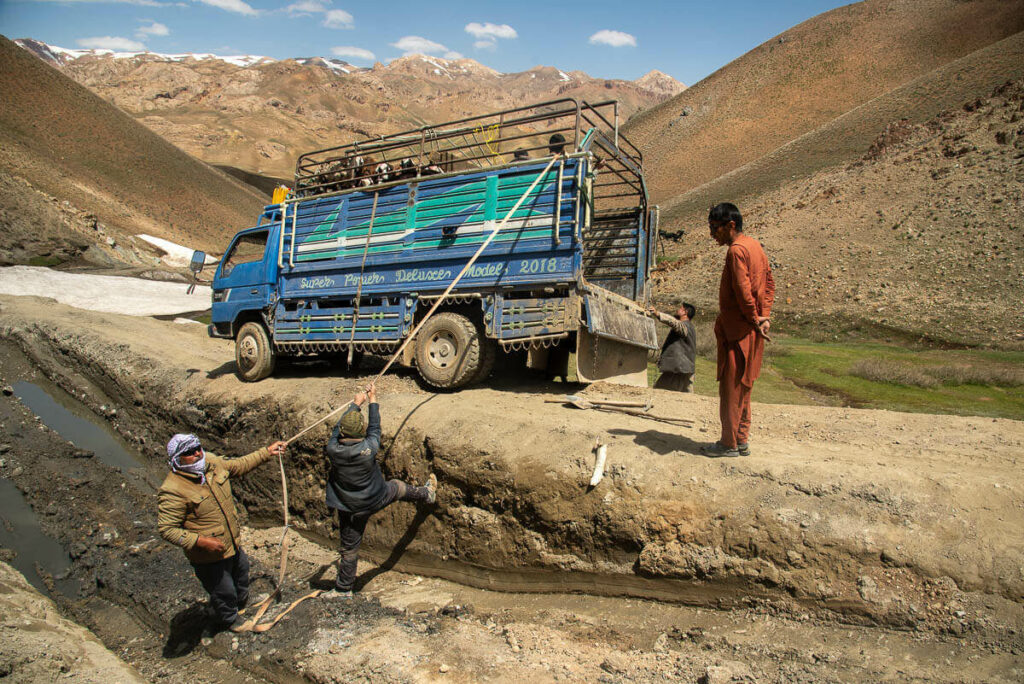

Facts about the country, the Afghans and their culture
The Islamic Emirate of Afghanistan
Something interesting to mention is that when the Taliban took over, the country officially changed its name from the Islamic Republic of Afghanistan to the Islamic Emirate of Afghanistan.
They also removed any sign of the official flag – the one with black, green, and red stripes and replaced it with the Talib-friendly white flag, today visible everywhere.


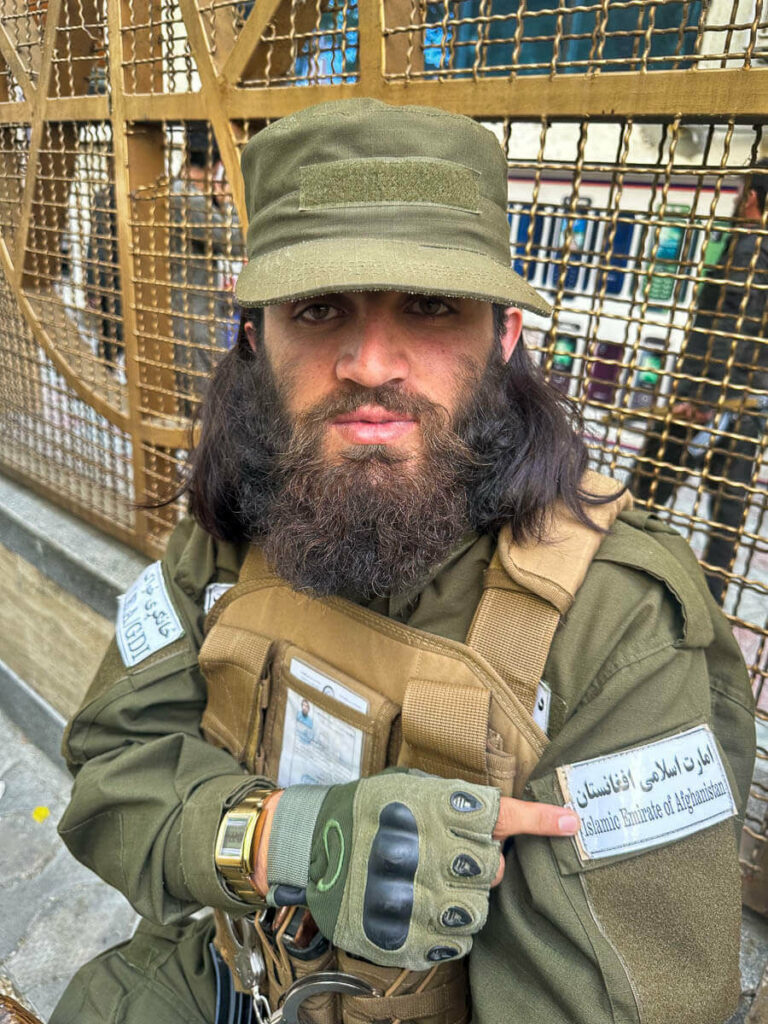

Afghanistan is multi-ethnic
Afghanistan is composed of several ethnicities, including Pashtuns (42%), Tajik (27%) and Hazara (9%).
Hazara are the Shia minority who have Mongolian features, Bamyan being their heartland.
There’s also a significant population of Uzbeks in Mazer-i-Sharif and around, who mostly came from Uzbekistan escaping the terror from former dictator Islam Karimov.
Dari is the main language, but Pashto is official too
Dari is a variation from Farsi, the language spoken in Iran.
Afghans and Iranians can understand each other without a problem.
Dari is the language used by the administration and it’s spoken by nearly 80% of the population.
Pashto is an official language too but it’s usually spoken only by the Pashtuns, who are the dominant ethnicity.
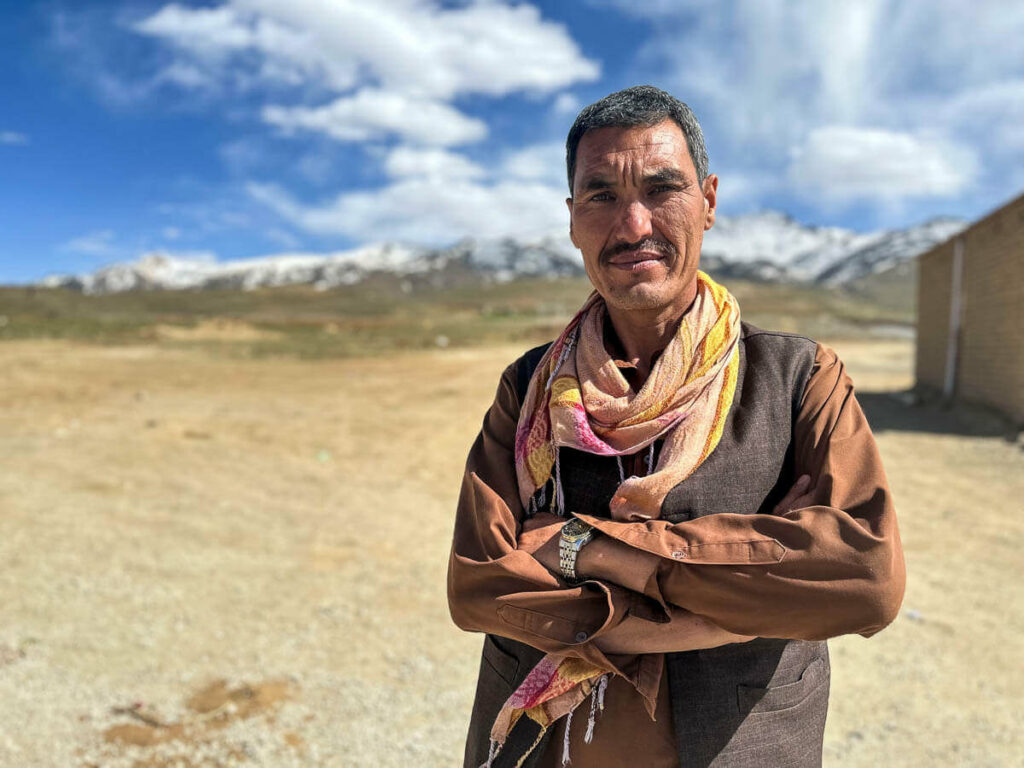

Language barrier can be a problem sometimes
When traveling in rural Afghanistan across the Hindu Kush, I found communicating with people to be extremely difficult, not only because of the language barrier but even sign language didn’t work, probably because they have had so little Western exposure, that their way of communication is just completely different.


Women in Afghanistan
Afghanistan is the most patriarchal country in the world, with or without the Taliban but, since the latter returned to power, women have lost even more freedom.
It’s not mandatory for women to wear the burqa, they can wear a hijab and they can walk alone in the streets but the Taliban have banned them from accessing higher education.
I actually discussed this particular topic with a Taliban sympathizer and he said that according to Prophet Mohammed, schools must be segregated by gender so there’s no actual room for women now but the new Government is doing their best to figure it out.
What I found truly unreal is that he was actually believing all that shit.
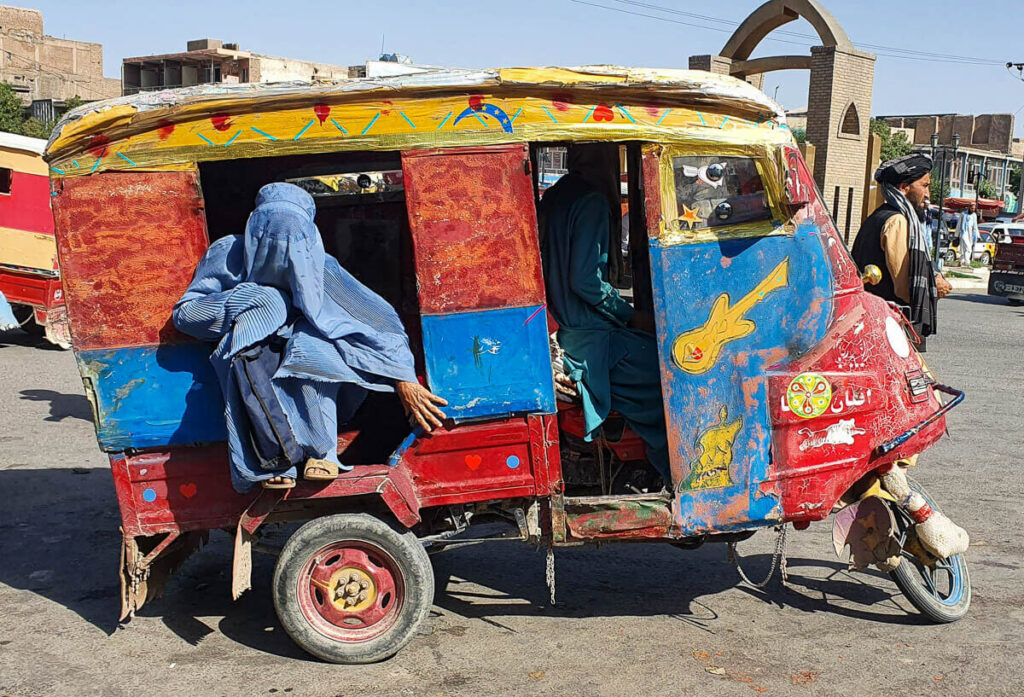

🍲 Afghan cuisine
Located at the heart of Central Asia, Afghan food is a mixture of flavors from Iran, Afghanistan, Uzbekistan, and Tajikistan.
It’s heavily meat-based to the extent that it can be a struggle for vegetarians venturing into more rural areas.
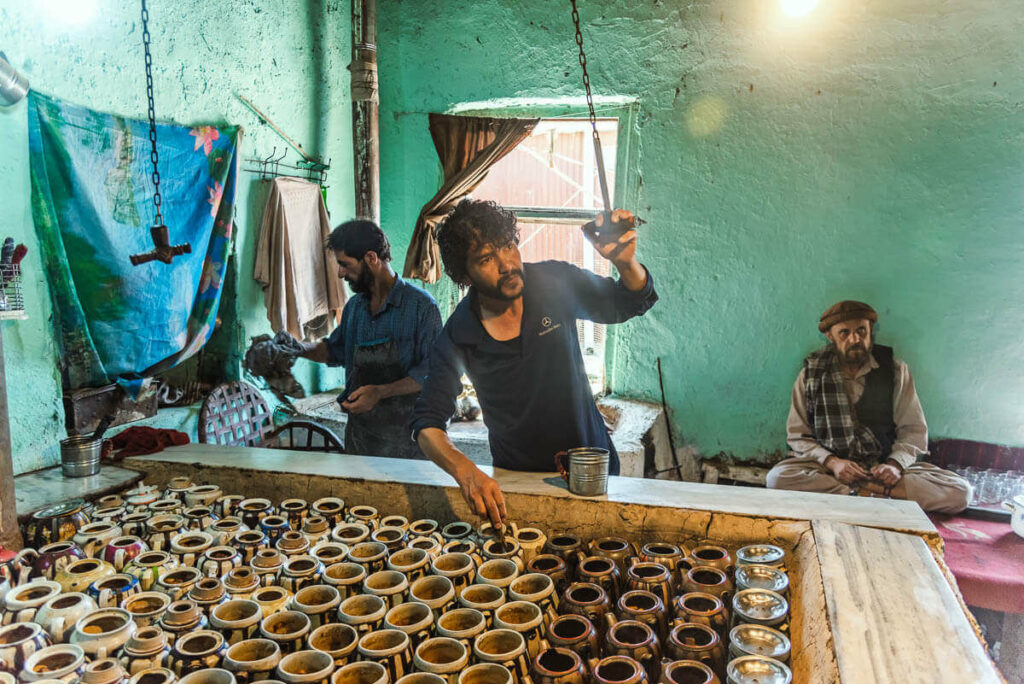

Their national dish is Kabuli palaw, consisting of rice fried in meat fat typically topped with carrots and raisins and essentially, the same as plov in Uzbekistan.
Afghanistan also has their own dumplings named mantu, typically filled with mutton and covered with yogurt and yellow lentils.
Ashak is the only vegetarian dish in Afghan cuisine, consisting of dumplings filled with leeks and other vegetables.


Is there any alcohol in Afghanistan?
Afghanistan is a dry country, as it was before the Taliban.
📚 Best books for traveling in Afghanistan
Kite runner – Khaled Hosseini
An American bestseller in 2003, Kite runner narrates the story of two Afghan kids in Kabul, a rich boy and the son of his parent’s servants.
The book also gives endless insights of what life in Kabul and Afghanistan is like.
My Life with the Taliban – Abdul Salam Zaeef
This is the mind-blowing biography of a senior former member of the Taliban.
From growing up in conservative, rural Afghanistan to the years he spent in Guantanamo, this amazing book gives priceless insights into the Taliban movement from the inside.
Afghanistan Essential Guide to Customs & Culture – Culture Smart!
Cultural Smart! is a series of guidebooks that focus on the country’s culture, giving loads of information about local customs, cultural etiquette and stuff like that. The one on Afghanistan is great, with deep explanations of why Afghans are so hospitable.
Afghanistan travel guide – Lonely Planet
The travel guide to Afghanistan from Lonely Planet is outdated (2007) but still, is a great source of information on the country. It can be difficult to find a copy.
💻 Internet in Afghanistan
Is there Wi-Fi in Afghanistan?
There’s kind of unreliable Wi-Fi in big cities but if you need it for work, it won’t be good enough.
Getting a SIM card in Afghanistan
To buy a SIM, you’ll have to go to one of the official branches, which tend to open from 8am to 4pm.
There are many mobile companies in Afghanistan, including: Afghan Telecom, Afghan Wirless, Etisalat, MTN, Roshan, and Salaam.
Apparently, each company is only good for certain provinces but everyone was telling us different things.
In the end, I bought MTN because they said it was the best one for all Afghanistan but it only worked in the big cities.
Note that there’s no 4G but only 3G or not even that.
Get a VPN for traveling in Afghanistan
You should always use a VPN when you travel, especially when you connect to public Wi-Fi networks.
Your connection will be much safer. Moreover, you will be able to access content which is typically censored in Afghanistan.
I recommend ExpressVPN – Extremely easy to use, fast and cheap.
❗ More Information
📢 In my Travel Resources Page you can find the list of all the sites and services I use to book hotels, tours, travel insurance and more.
All guides and articles for traveling in Afghanistan
Travel guides to other countries in Central Asia
You might also like our Haiti travel guide.
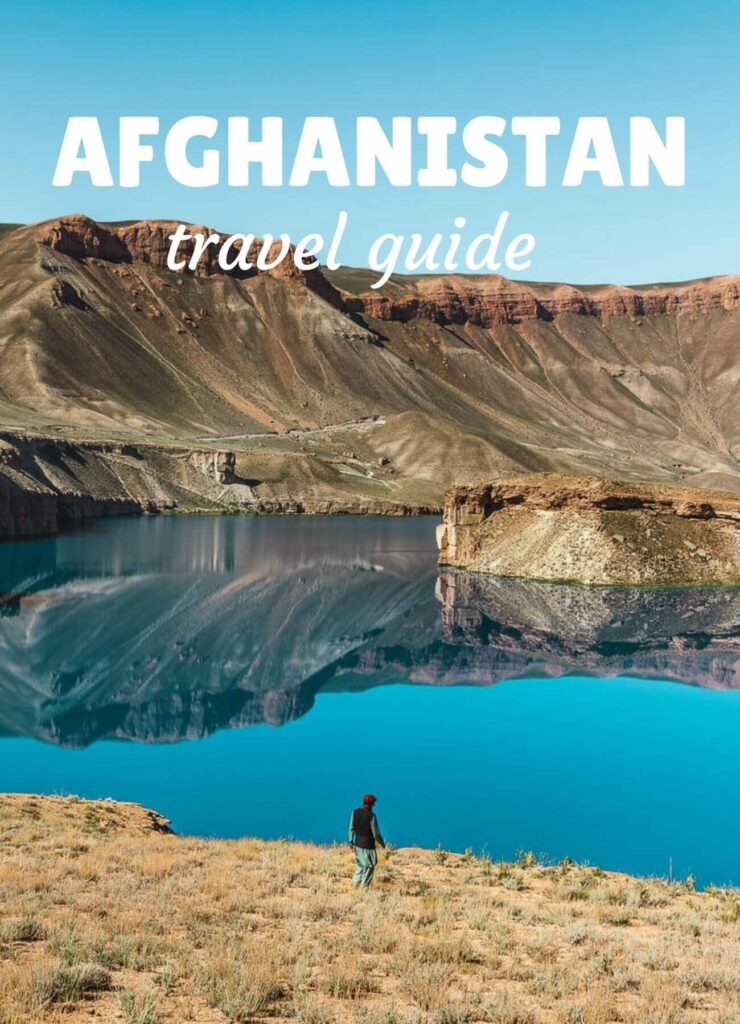

Source link


